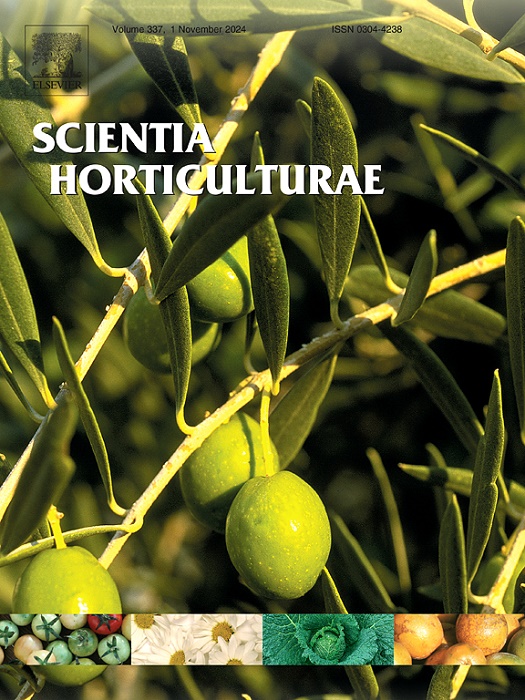Species, variety and maturity affect β-carotene and lycopene in pumpkin fruit
IF 3.9
2区 农林科学
Q1 HORTICULTURE
引用次数: 0
Abstract
Carotenoids in pumpkin are nutritionally important as antioxidants, while the relationship between species, maturity and carotenoids and also the accumulation of carotenoids during fruit growth have not been extensively analyzed. We investigated β-carotene and lycopene contents of nineteen pumpkin varieties by HPLC. The adopted HPLC method was dependable and provided good separation of β-carotene and lycopene. The formation of β-carotene during pumpkin growth did not present a special formation phase except for one variety, while the accumulation rate of β-carotene differed among varieties, ranging from 1.5 to 32.0 µg/100 g per day. Low concentrations of lycopene were detected in six pumpkin varieties having high content of β-carotene. Maturity and species all had significant effect on β-carotene content (物种、品种和成熟度对南瓜果实中β-胡萝卜素和番茄红素的影响
南瓜中的类胡萝卜素作为抗氧化剂具有重要的营养价值,而品种、成熟度和类胡萝卜素之间的关系以及类胡萝卜素在果实生长过程中的积累尚未得到广泛分析。我们采用高效液相色谱法研究了 19 个南瓜品种的 β-胡萝卜素和番茄红素含量。所采用的高效液相色谱法可靠,能很好地分离β-胡萝卜素和番茄红素。除一个品种外,β-胡萝卜素在南瓜生长过程中的形成并不存在特殊的形成阶段,而β-胡萝卜素的积累速度则因品种而异,从每天 1.5 微克/100 克到 32.0 微克/100 克不等。在六个β-胡萝卜素含量较高的南瓜品种中,检测到的番茄红素浓度较低。成熟度和品种对 β-胡萝卜素含量都有显著影响(P < 0.05)。C. maxima 的 β-胡萝卜素含量约为 C. moschata 的 3.3 倍(P < 0.05),早熟品种是中晚熟品种的 2.0 倍(P < 0.05)。通过分层聚类分析,按β-胡萝卜素含量和平均单果重将品种分为三个相似组,其中一些早熟品种,尤其是β-胡萝卜素含量超过 950 µg/100 g 鲜重的品种,可能是维生素 A 的良好来源。
本文章由计算机程序翻译,如有差异,请以英文原文为准。
求助全文
约1分钟内获得全文
求助全文
来源期刊

Scientia Horticulturae
农林科学-园艺
CiteScore
8.60
自引率
4.70%
发文量
796
审稿时长
47 days
期刊介绍:
Scientia Horticulturae is an international journal publishing research related to horticultural crops. Articles in the journal deal with open or protected production of vegetables, fruits, edible fungi and ornamentals under temperate, subtropical and tropical conditions. Papers in related areas (biochemistry, micropropagation, soil science, plant breeding, plant physiology, phytopathology, etc.) are considered, if they contain information of direct significance to horticulture. Papers on the technical aspects of horticulture (engineering, crop processing, storage, transport etc.) are accepted for publication only if they relate directly to the living product. In the case of plantation crops, those yielding a product that may be used fresh (e.g. tropical vegetables, citrus, bananas, and other fruits) will be considered, while those papers describing the processing of the product (e.g. rubber, tobacco, and quinine) will not. The scope of the journal includes all horticultural crops but does not include speciality crops such as, medicinal crops or forestry crops, such as bamboo. Basic molecular studies without any direct application in horticulture will not be considered for this journal.
 求助内容:
求助内容: 应助结果提醒方式:
应助结果提醒方式:


